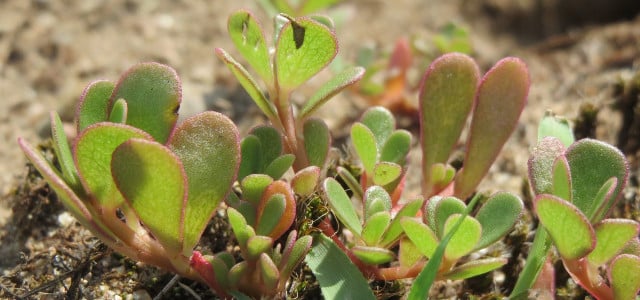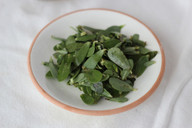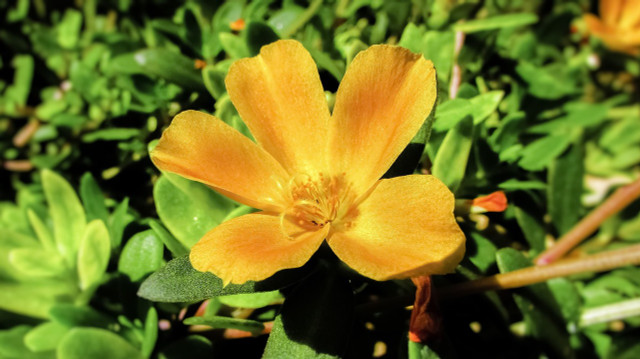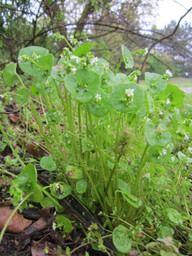
Purslane is an inconspicuous herb, but it’s full of vitamins. Why it’s more than a “weed” and how to bring it into your garden and kitchen, read here.
Contents
Purslane: Plant power for health
Vegetables are healthy and then there are some that are really healthy, including purslane (Portulaca oleracea).
The small inconspicuous herb contains almost all of the important vitamins and minerals that you need for a healthy diet. No wonder, then, that purslane was highly prized in earlier times as a domestic source of vitamins, especially vitamin C. Today, this healthy side of purslane is almost forgotten and it is disregarded as a “weed”.

Purslane contains:
Vitamin C is abundant and strengthens the immune system.
Vitamin A and vitamin E, among others, are important antioxidants that protect your cells from damage and regenerate them.
It contains vital minerals such as magnesium, calcium, potassium, phosphorus, iron, zinc and sodium to build body tissues such as bones, muscles and nerves.
Purslane is considered a traditional medicinal plant. The juicy leaves contain mucilages that have a soothing effect on an irritated stomach or intestinal mucosa.
Freshly squeezed purslane juice helps against indigestion or heartburn.
As a vitamin cocktail with nettle and dandelion, it is effective against springtime fatigue.
With purslane you also supply your body with the valuable omega-3 fatty acids. Omega-3 fatty acids inhibit inflammation and also protect the bloodstream from deposits.
How to prepare purslane
The fleshy, egg-shaped leaves and tender stems of purslane are edible. They have a sour aroma and taste a little salty. You can safely save the salt if you use purslane.
You can eat the fresh leaves and shoots raw or blanched – this way the valuable vitamins are preserved. Purslane can be used in many ways in the kitchen:
- Sprinkle raw, finely chopped purslane into your salad or over a hearty whole grain bread.
- The tangy flavor goes well with cream cheese, spreads, or a country breakfast with scrambled eggs or vegan scrambled eggs made with tofu.
- Fresh purslane adds a special spice to your homemade herb curd.
- Traditionally, purslane is also eaten warm as a vegetable. Blanch the leaves briefly or cook them gently over steam. Serve the vegetable with a cream sauce, for example, as a side dish for omelets or fried eggs.
- In Mediterranean countries, purslane is simply tossed briefly in hot olive oil with garlic. With a yogurt sauce, purslane goes well with chickpeas or baked potatoes, for example. Be careful not to heat olive oil above 180 degrees Celsius. If the oil smokes or burns in the pan, harmful substances can be produced.
Sowing purslane in the garden

The purslane plant loves the sun and is also called summer purslane. You can find wild purslane on dry sunny meadow edges. It has branched elongated oval leaves, which often have a reddish tinge at the ends of the leaves. The plants spread flat over the ground, with shoots up to 30 centimeters long.
You can grow this healthy herb in your garden or in a pot on your balcony.
- From the beginning of May, when the weather becomes milder, start sowing purslane in the garden. Choose a sunny place with a loose sandy soil.
- Either sow it in rows or scatter the seeds over the bed. The rows should be spaced about 20 inches apart.
- The seeds germinate very safely, but they need light. Therefore, cover them only with a little loose soil.
- The seedlings grow quickly and branch out above the ground. You need enough distance between the young plants. Separate the seedlings by plucking out plants that are too close together.
- Purslane is easy to care for – regular watering is enough. The plant is frugal and does not need additional fertilizer. It is enough to prepare the bed with compost in the spring before sowing.
- Purslane does not tolerate waterlogging. If you have a heavy soil with a lot of clay, mix some sand under it.
- Tip: Let some plants bloom, so you get seeds for the next year right away. Purslane is an annual plant that you will need to reseed every year.
Harvest purslane properly
The first fresh shoots can be harvested after about four weeks. Cut off only the upper shoots with a sharp knife. The lower third of the plant will sprout again and you can harvest again.
As soon as the first yellow flowers appear, bitter substances collect in the leaves and you should no longer eat them.
The harvested purslane is best used immediately. Cut off only as much as you need. Because purslane is difficult to store, even in the refrigerator, the crunchy shoots quickly become mushy. But if you reseed every two weeks, you will always have fresh purslane on hand.
You can still reseed outside until about the end of September. For your winter needs, sow purslane in a pot and place it in a sunny window.
Purslane – confusion of names

The name purslane is popularly shared by two other plants. They are not very similar and botanically only remotely related.
- Winter purslane (Claytonia perfoliata or Montia perfoliata): You can easily distinguish this plant from summer purslane by its leaves. Winter purslane is also called plate weed, after its round somewhat heart-shaped leaves that grow like plates around the stem. Another common name you’ll find for this herb is postelein.
- Purslane (Portulaca grandiflora): These are distantly related to purslane, but originated in South America. You’ll often find these lush flowering plants in rock gardens. There they are prized mainly for the colorfulness of their flowers. The leaves resemble needles rather than deciduous leaves.


